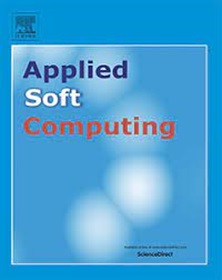Late acceptance hill climbing based algorithm for Unmanned Aerial Vehicles (UAV) path planning problem
IF 7.2
1区 计算机科学
Q1 COMPUTER SCIENCE, ARTIFICIAL INTELLIGENCE
引用次数: 0
Abstract
This research innovatively applies the Late Acceptance Hill-Climbing (LAHC) algorithm to unmanned aerial vehicle (UAV) path planning in complex urban environments, marked by irregularly shaped threat areas. Moving beyond conventional models that simplify threat representations, our approach meticulously calculates collision costs, factoring in both the size and proximity of threat areas to waypoints, thereby enhancing path safety and feasibility. The standout feature of the LAHC algorithm is its memory-based strategy, which is simple yet remarkably effective, as evidenced by its superior performance over leading meta-heuristic algorithms across various urban flight scenarios. The study’s findings are significant, revealing that LAHC not only excels in optimizing path costs but also outperforms in terms of the number of iterations to convergence and average execution time. Additionally, a detailed convergence and complexity analysis of LAHC is conducted, providing deeper insights into its operational efficiency. Key contributions of this study include the development of realistic benchmark flight environments, the introduction of a novel method for collision cost calculation in urban settings, and the successful demonstration of LAHC’s rapid optimization capabilities and high-quality solutions.
求助全文
约1分钟内获得全文
求助全文
来源期刊

Applied Soft Computing
工程技术-计算机:跨学科应用
CiteScore
15.80
自引率
6.90%
发文量
874
审稿时长
10.9 months
期刊介绍:
Applied Soft Computing is an international journal promoting an integrated view of soft computing to solve real life problems.The focus is to publish the highest quality research in application and convergence of the areas of Fuzzy Logic, Neural Networks, Evolutionary Computing, Rough Sets and other similar techniques to address real world complexities.
Applied Soft Computing is a rolling publication: articles are published as soon as the editor-in-chief has accepted them. Therefore, the web site will continuously be updated with new articles and the publication time will be short.
 求助内容:
求助内容: 应助结果提醒方式:
应助结果提醒方式:


